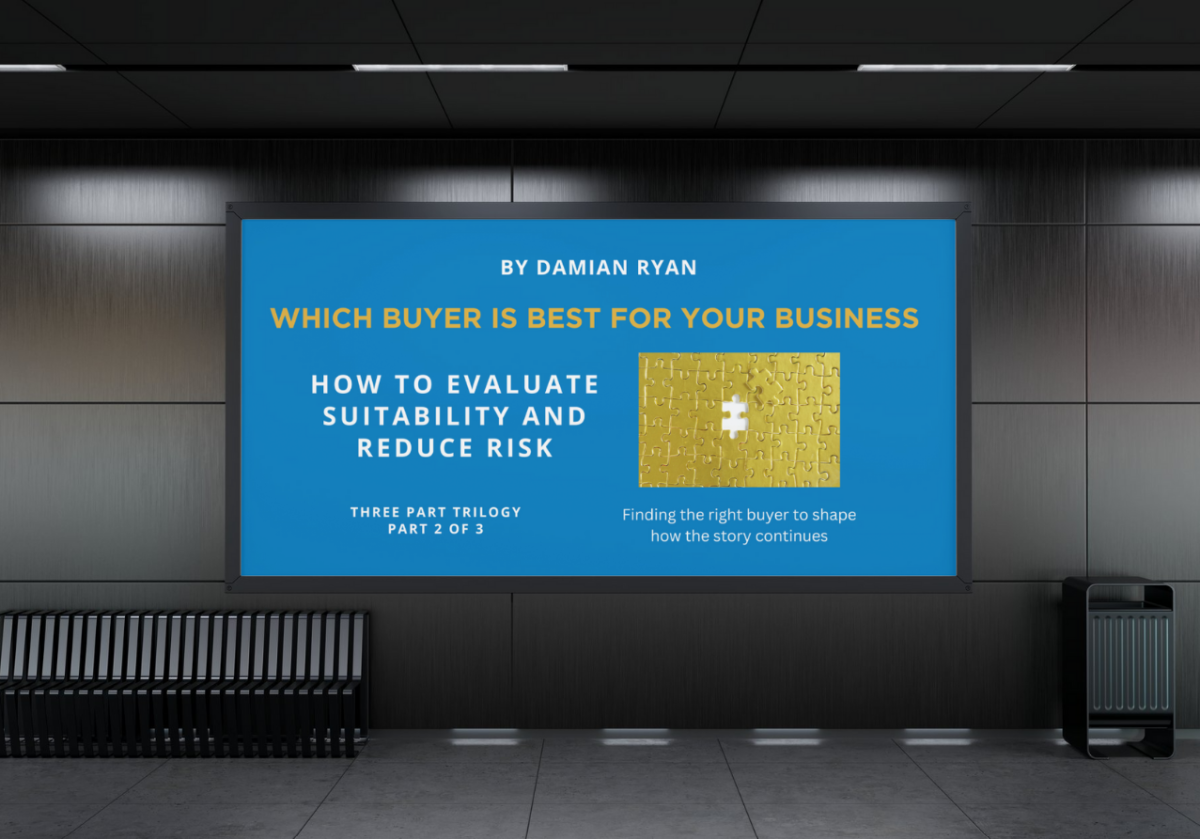When you sell your business, there’s one question that matters just as much as price — who exactly are you selling to?
In M&A, founders often focus on finding a buyer. The goal should be finding the right one.
Because when the ink dries, you’re not just handing over numbers on a balance sheet. You’re handing over your people, your clients, your brand, and your reputation. And the buyer you choose will shape how that story continues.
There’s no perfect buyer
It’s a common misconception that there’s such a thing as the perfect acquirer. There isn’t. Every buyer type — whether private equity, trade, or strategic — comes with advantages and trade-offs.
Private equity buyers bring capital and rigour, but they may also demand aggressive growth targets or operational restructuring. Strategic buyers (often from your own industry) can accelerate market share and synergy — but integration can be bumpy if cultures clash.
The key isn’t perfection, it’s alignment — shared values, shared ambition, and a realistic vision for what your business will look like post-acquisition.
Fit matters more than flash
One of the most successful deals we’ve worked on at Ryan Capital Partners was the sale of WhenFresh, the UK’s leading residential property data provider, to PriceHubble, Europe’s market leader in real estate and financial data solutions.
On paper, WhenFresh had multiple interested parties. Several buyers dangled attractive numbers. But Mark Cunningham, WhenFresh’s co-founder, knew that valuation was only half the story.
‘The offer that stood out,’ Mark told me, ‘wasn’t necessarily the highest. It was the one that made sense for our team, our clients, and our technology. PriceHubble understood what we’d built — and had the platform to take it global.”
That understanding created trust. It also created momentum. Because when both sides are aligned on purpose and people, deals move faster and integration pain is reduced.
The four pillars of buyer alignment
- Vision and Strategy: Do they genuinely understand where your business fits in their roadmap? The best buyers see you as an integral piece of their growth puzzle — not a trophy acquisition.
- Culture and People: Culture clashes kill more value than financial missteps. If the buyer’s leadership style, communication habits, or management tempo don’t resonate with yours, expect friction.
- Integration Capability: Acquiring is easy. Integrating is hard. Ask about their past acquisitions: What worked? What didn’t? How did they treat the acquired teams?
- Execution and Certainty: The best buyers don’t just talk a good game — they complete. They have clear processes, dedicated teams, and the financial capacity to get deals done.
Red flags to watch for
Just as the right buyer can multiply value, the wrong one can erode it quickly. Be wary of:
- Overpromising early: Buyers who inflate expectations rarely sustain them.
- Unclear decision chains: Endless ‘internal approvals’ often signal lack of commitment.
- Unrealistic synergy claims: ‘We’ll double your revenue in six months’ is usually a sign of poor due diligence.
- Cultural blind spots: If they barely mention your people, that’s a concern.
Due diligence goes both ways
Most founders assume due diligence is a one-way process — the buyer scrutinising every document, client contract, and forecast. But smart sellers know it should go both ways.
Interview the buyer.
Ask about their previous acquisitions, their leadership team, their post-deal retention rates. Find out how they measure success 12 months after a deal.
You’re not being difficult — you’re protecting the business you’ve built.
Don’t rush the relationship
Another mistake founders make is rushing to exclusivity after a flattering offer. Take your time. The best deals emerge from mutual respect and understanding, not haste.
At RCP, we often tell founders: ‘You don’t need to be the buyer’s biggest deal. You just need to be their best fit.’
When you sense genuine alignment — not just financial ambition — you’ll know you’ve found the right buyer.
Beyond the numbers
Mark Cunningham summed it up perfectly when reflecting on the WhenFresh acquisition:
‘We didn’t just sell a business. We found a partner who believed in what we’d built and could take it further.’
That’s the essence of choosing the right buyer. It’s not about walking away with the most money — it’s about walking away knowing your business, your people, and your reputation are in the right hands.
Because when the fit is right, everyone wins.
This article is part of Damian Ryan’s ‘What Really Drives Value”’trilogy for MediaCat. The next instalment will explore ‘What Buyers Really Value’ — the traits, numbers, and behaviours that make a business truly acquisition-ready.

